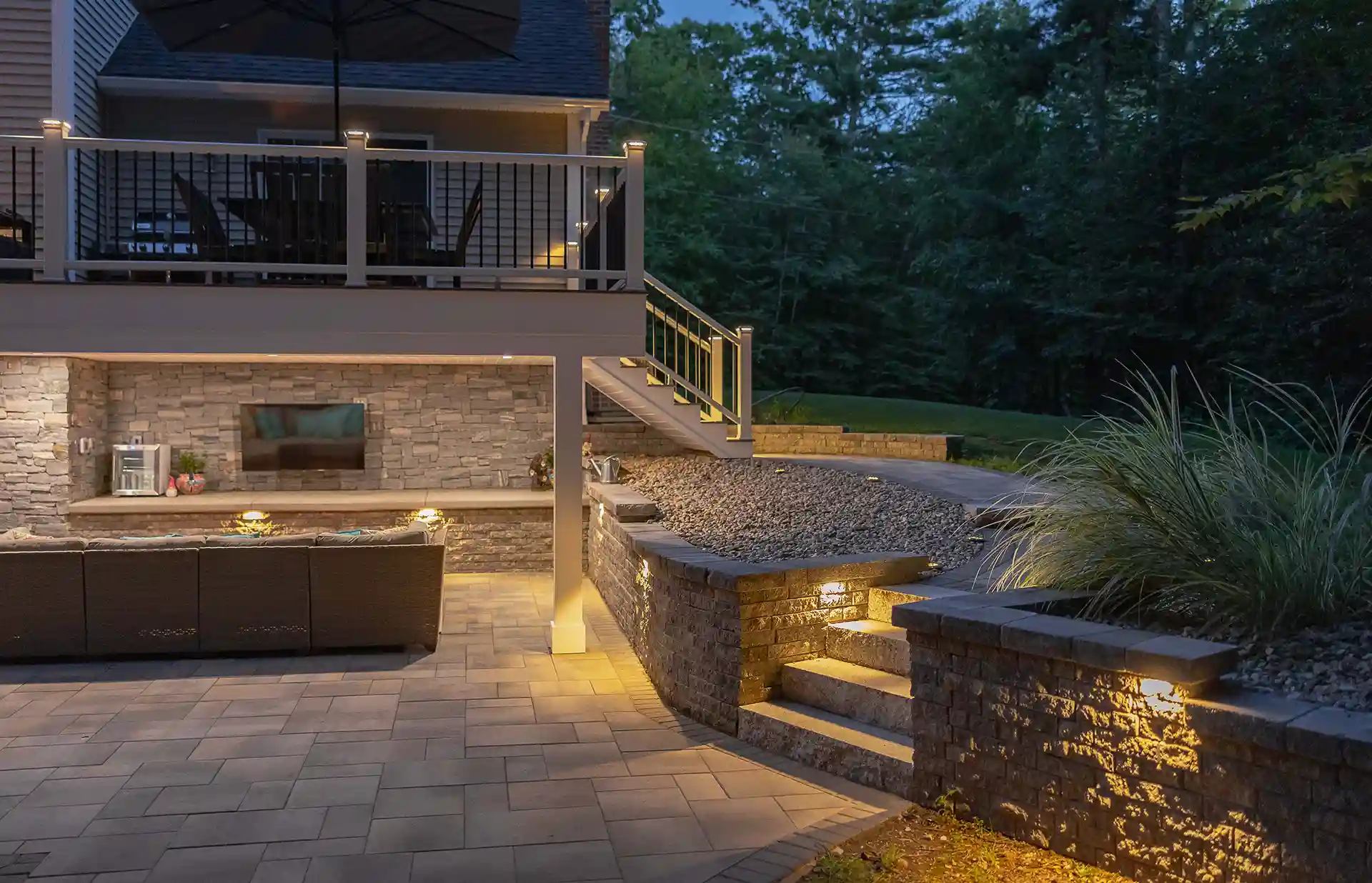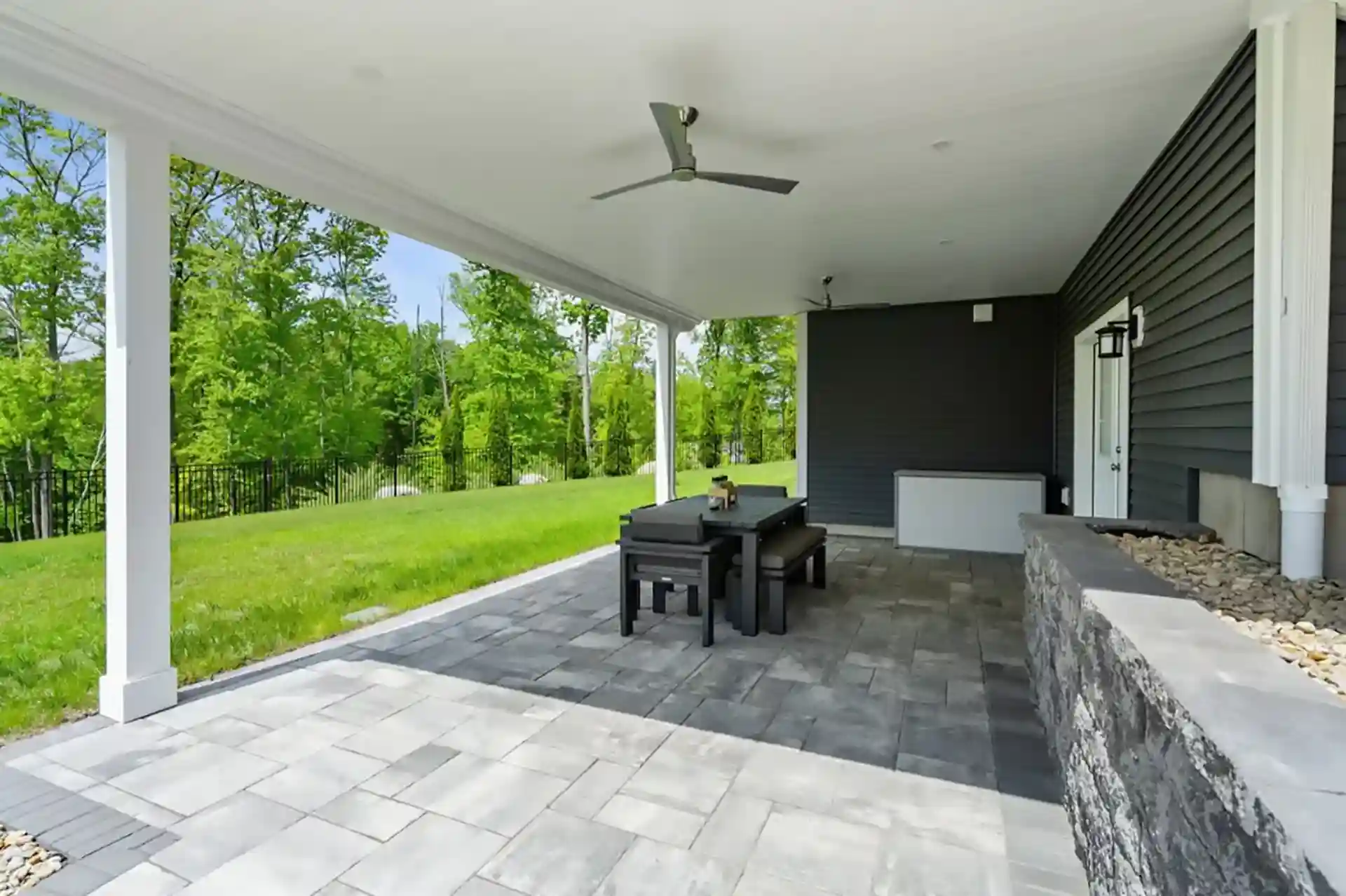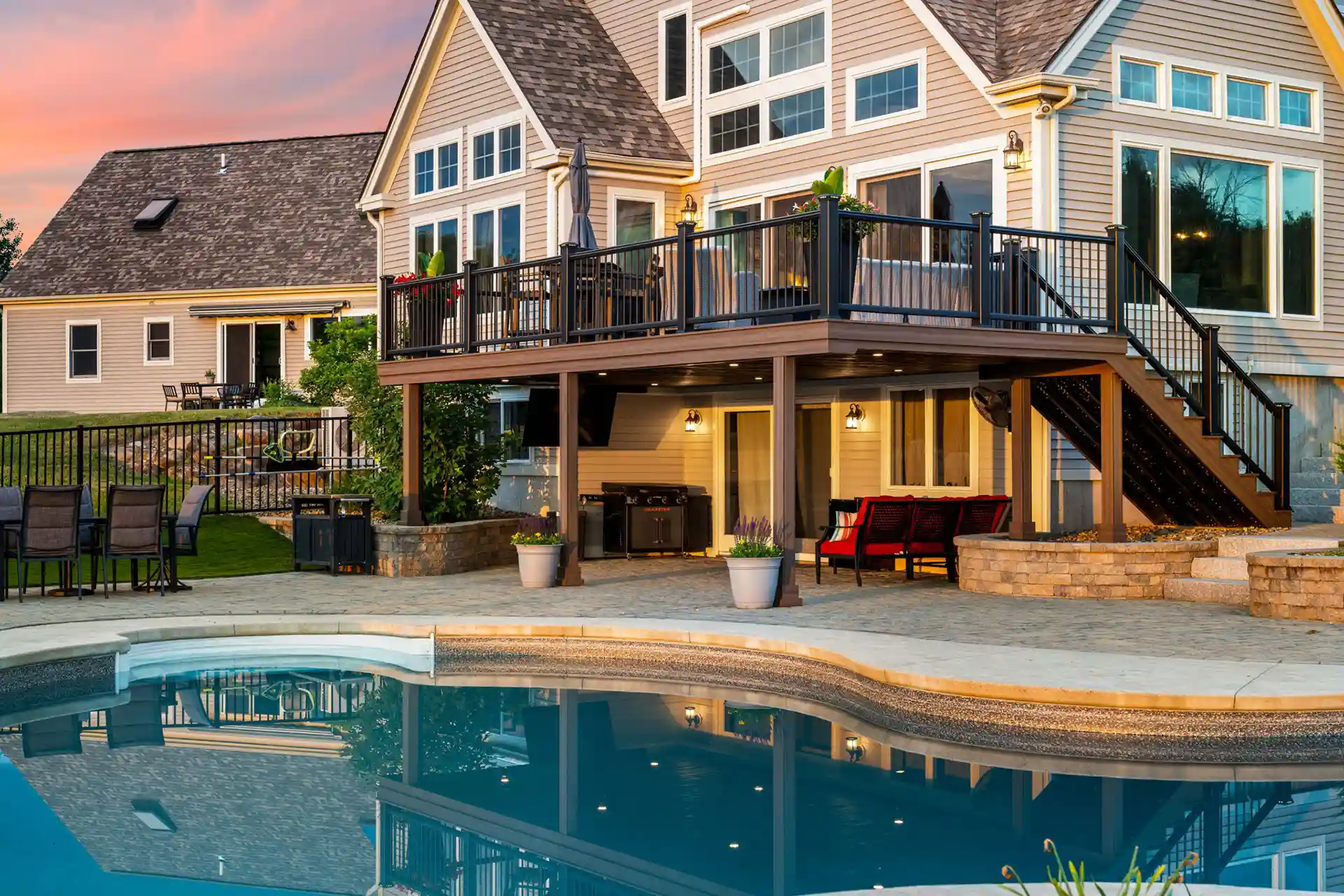Why Basement Costs Are Changing in 2025
Basement finishing costs in 2025 are shifting due to changes in material prices, labor availability, and evolving design trends. Homeowners face new challenges and opportunities when planning a basement remodel. Villandry Home & Outdoor Living understands these changes and can help you navigate the costs confidently.
This guide explains what you can expect to pay and how to plan your basement finishing project effectively. Whether you’re aiming for affordable basement finishing or a custom design, knowing the latest pricing trends is key to budgeting correctly.
Average Cost to Finish a Basement in 2025: National and Local Insights with Material & Labor Breakdown

Finishing a basement in 2025 typically costs between $7 and $23 per square foot, with the national average landing around $15 to $20 per square foot. For example, finishing a 1,000-square-foot basement can range from $15,000 to $23,000, depending on the level of finishes and complexity.
Locally, material prices and labor rates can shift costs slightly above or below these averages in areas like Dunbarton, NH. Skilled labor shortages and supply chain changes have also influenced pricing, making it essential to plan carefully and work with trusted contractors like Villandry Home & Outdoor Living.
| Cost Component | Typical Material Cost (per sq. ft.) | Typical Labor Cost (per sq. ft.) | Details & Notes |
| Framing | $3 – $7 | $7 – $16 | Building walls and ceiling framework is labor-intensive and requires skill. |
| Drywall | $1 – $3 | $1.50 – $3 | Includes hanging, taping, and finishing drywall for walls and ceilings. |
| Insulation | $0.50 – $2 | $0.50 – $1.50 | Critical for energy efficiency; includes batts or spray foam. |
| Flooring | $2 – $10+ | $1.50 – $5 | Material varies from carpet to tile or hardwood; labor depends on the type. |
| Painting | $0.50 – $1.50 | $1 – $2.50 | Primer and two coats on walls and ceilings. |
| Electrical & Lighting | Fixture cost varies ($50–$200 each) | $75 – $150 per fixture | Wiring, outlets, switches, and recessed lighting; labor varies by complexity. |
| Plumbing | Fixture cost varies ($200–$500 each) | $200 – $400 per fixture | For bathrooms and wet bars, installation includes piping and fixtures. |
| Waterproofing | $4 – $10 | Included with specialized labor | Essential to prevent moisture damage; often bundled with foundation work. |
Materials typically comprise about 60-70% of the total cost, while labor accounts for 30-40%. Permits, design fees, and hidden costs like egress windows or waterproofing can add several thousand dollars to your budget.
Hiring experienced professionals like Villandry Home & Outdoor Living ensures your project meets safety codes, runs smoothly, and delivers lasting value.
Hidden Costs to Watch Out For (Permits, Waterproofing, Egress)
Many homeowners overlook necessary hidden costs that can increase their total investment:
- Permits:
- Required for electrical, plumbing, structural, and finishing work.
- Depending on the municipality, fees typically range from $1,200 to $2,000.
- Skipping permits can lead to fines or issues when selling your home.
- Waterproofing:
- It must be addressed before finishing to prevent moisture issues.
- Costs range from $4 to $10 per square foot.
- May include sump pumps, drainage systems, and sealants.
- Protects investment and prevents mold or damage.
- Egress Windows:
- Safety regulations require egress windows for basement bedrooms.
- Installation costs between $1,800 and $3,000 (excavation, framing, permits).
- Essential safety feature that adds home value.
- Additional Costs to Consider:
- Design fees ($2,000 to $7,000) for professional designers/architects.
- Structural repairs for foundation cracks or support beams.
- HVAC adjustments to extend heating/cooling to the basement ($1,500 to $3,000).
Planning for these helps avoid surprises and keeps the project on track.
Additional Costs to Consider:
- Design Fees: Hiring a professional designer or architect may cost $2,000 to $7,000, but ensures efficient use of space and compliance with codes.
- Structural Repairs: Unexpected foundation cracks or support beam repairs can add thousands to your budget.
- HVAC Adjustments: Extending heating and cooling systems into the basement usually costs $1,500 to $3,000.
Planning these expenses upfront will help you avoid surprises and keep your basement finishing project on track.
How to Budget for a Basement Renovation
Set a realistic budget with these steps:
- Calculate the basement size and multiply by your desired finish level’s average cost per square foot.
- List all expected expenses: materials, labor, permits, design fees, and hidden costs.
- Separate essentials (waterproofing, egress) from luxury features (wet bar, custom cabinetry).
- Get detailed quotes from reputable contractors, including Villandry Home & Outdoor Living.
- Allocate 10–15% contingency for unexpected expenses like moisture or structural issues.
- Plan the project timeline to reduce labor costs and household disruption.
Villandry Home & Outdoor Living can guide you through budgeting and help create a plan that fits your financial goals without compromising quality or safety. Experience our hassle-free process!
Financing Options & Promotions in 2025 (Enhanced with NH Resources)
Financing your basement finishing project in 2025 will be easier thanks to various tailored loan products and assistance programs available locally and nationally.
Home Equity Loans and Lines of Credit (HELOC):
HELOCs remain a top choice for home renovation financing because they offer low interest rates and tax-deductible interest payments. According to NerdWallet, HELOCs are ideal for large-scale projects like basement finishing because they have lower rates than personal loans and credit cards.
Personal Loans:
Personal loans offer a fixed rate and set repayment schedule without using your home as collateral. NerdWallet ranks them as a good alternative when home equity financing is not an option, though interest rates tend to be higher. Use personal loans for moderate budget projects or when you need quick access to funds.
Credit Cards:
While convenient for smaller purchases, credit cards typically carry higher interest rates and are best for short-term financing or initial materials purchases.
Contractor Financing:
Villandry Home & Outdoor Living provides financing promotions for 2025 projects, including low- or no-interest financing options for qualified homeowners. Discussing financing directly with your contractor can lead to flexible payment solutions tailored to your budget.
Weatherization Assistance Program (WAP) — NH Department of Energy:
This program offers eligible low-income households free weatherization services, including basement insulation, air sealing, and moisture control. It’s designed to reduce energy costs and improve home comfort.
Weatherization Assistance Program (WAP) — New Hampshire Housing Finance Authority (NHHFA):
As the 2025 NHHFA Program Plan outlines, WAP is part of broader state efforts to assist low-income homeowners with weatherization and energy efficiency upgrades. The NHHFA collaborates with the NH Department of Energy and other partners to deliver these services.
Start Planning Your Basement Renovation with Confidence
Finishing your basement in 2025 can unlock valuable living space and increase your home’s comfort and value. Understanding the actual cost—including materials, labor, permits, and hidden expenses—helps you plan effectively and avoid surprises. Local factors and new financing options in New Hampshire make this an ideal time to move forward.
Villandry Home & Outdoor Living offers expert guidance, transparent pricing, and financing solutions tailored to your budget. From initial design to final build, our team is committed to delivering quality results that meet your goals and timeline.
Come visit us to start planning, request a custom quote, and take the first step toward your dream basement!


